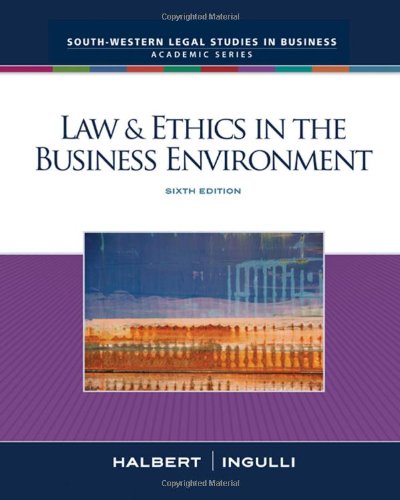Why, in the majority opinion of Justice Stevens, is the standing of the petitioners enhanced by the
Question:
Why, in the majority opinion of Justice Stevens, is the “standing” of the petitioners enhanced by the fact that they include the Commonwealth of Massachusetts? Why, according to Chief Justice Roberts’ dissent, do the petitioners lack standing?
Calling global warming “the most pressing environmental challenge of our time,” a group of States, local governments, and private organizations, alleged … that the Environmental Protection Agency (EPA) has abdicated its responsibility under the Clean Air Act to regulate the emissions of four greenhouse gases, including carbon dioxide. Specifically, petitioners asked us to answer two questions concerning the meaning of § 202(a)
(1) of the Act: whether EPA has the statutory authority to regulate greenhouse gas emissions from new motor vehicles; and if so, whether its stated reasons for refusing to do so are consistent with the statute. EPA reasoned that climate change had its own “political history”: Congress designed the original Clean Air Act to address local air pollutants rather than a substance that “is fairly consistent in its concentration throughout the world’s atmosphere,” declined in 1990 to enact proposed amendments to force EPA to set carbon dioxide emission standards for motor vehicles, and addressed global climate change in other [anti-ozone] legislation.
Because of this political history EPA concluded that climate change was so important that unless Congress spoke with exacting specificity, it could not have meant the agency to address it.
… EPA [also argued] . . . that greenhouse gases cannot be “air pollutants” within the meaning of the Act…. The agency [argued] that if carbon dioxide were an air pollutant, the only feasible method of reducing tailpipe emissions would be to improve fuel economy. But because Congress has already created fuel economy standards subject to Department of Transportation administration, EPA regulation would either conflict with those standards or be superfluous.
Even assuming that it had authority over greenhouse gases, EPA explained why it would refuse to exercise that authority. The agency recogniz[ed] that the concentration of greenhouse gases has dramatically increased as a result of human activities, and acknowledged the attendant increase in global surface air temperatures. EPA nevertheless [cited] the NRC Report’s statement that a causal link between the two “cannot be unequivocally established.“ Given that residual uncertainty, EPA concluded that regulating greenhouse gas emissions would be unwise.
The agency . . . characterized any EPA regulation of motor-vehicle emissions as a “piecemeal approach” to climate change, [which] would conflict with the President’s “comprehensive approach” to the problem. That approach involves . . . support for technological innovation, [for] voluntary private-sector reductions in greenhouse gas emissions, and further research on climate change—not actual regulation. . . . [U]nilateral EPA regulation of motor-vehicle greenhouse gas emissions might also hamper the President’s ability to persuade key developing countries to reduce greenhouse gas emissions.
[The Court now must resolve a preliminary issue known as “standing.” When a petitioner lacks standing, a case cannot proceed to its underlying issues or “merits.” Standing is based on language from Article III of the Constitution, which limits federal court jurisdiction to “Cases” and “Controversies.” The notion is that only when a person or entity has suffered a particular harm can there be a remedy sought within the judicial system.
The Court must determine if any of the petitioning organizations that sued to make the EPA rule in this case can point to an injury that would satisfy this threshold issue of standing. ]
“[T]he gist of the question of standing” is whether petitioners have [a sufficiently]
“personal stake in the outcome of the controversy.” . . . As Justice Kennedy explained in . . . Lujan v. Defenders of Wildlife [landmark standing case decided by the Supreme Court in 1992]:
While it does not matter how many persons have been injured by the challenged action, the party bringing suit must show that the action injures him in a concrete and personal way. This requirement . . . preserves the vitality of the adversarial process by assuring both that the parties before the court have an actual . . . stake in the outcome, and that the legal questions presented . . . will be resolved, not in the rarified atmosphere of a debating society, but in a concrete factual context conducive to a realistic appreciation of the consequences of judicial action.
Step by Step Answer:

Law And Ethics In The Business Environment
ISBN: 9780324657326
6th Edition
Authors: Terry Halbert , Elaine Ingulli





